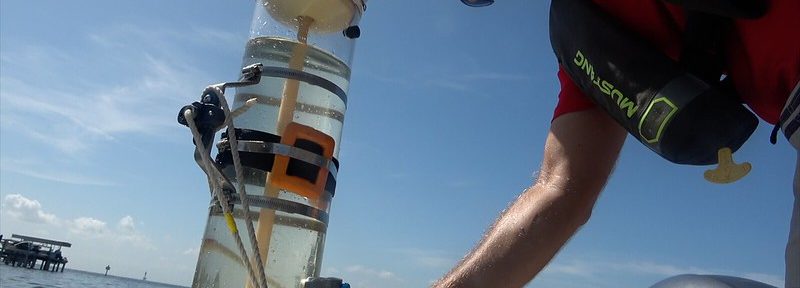by Monica Starr
An Ecology Florida Feature
If you are a Florida resident, you have heard about the harmful algae blooms taking over the gulf beaches this summer. These blooms of algae consist of small marine microorganisms known as Karenia brevis [1]. Most recently, these dangerous organisms have flourished in the Tampa Bay area, creating the phenomenon known as Red Tide. These blooms not only discolor coastal waters, but they deplete the oxygen in the water. Also, Ride Tide is extremely toxic to fish and other larger marine species like turtles, dolphins and manatees. Specifically, this algae produces neurotoxins that negatively impact the central nervous system of fish causing their gills to simply stop working properly. Sea birds like pelicans that eat the contaminated fish also run the risk of being negatively impacted by the toxic chemicals. This microorganism is commonly found in the Gulf of Mexico at all times, but the levels are usually low enough to not cause harm.
Nutrients that are normally found in the Tampa Bay include nitrogen, which can enter the water through fertilizer runoff. These nitrogen levels are abnormally high and provides a feast for the harmful algae. The high nitrogen levels are said to be caused by an event between March and April in Manatee County. Over “200 million gallons of polluted water was dumped into the bay off the grounds of the old Piney Point fertilizer plant” [1]. This was not done illegally. The state allowed this because there was a fear that a leaking reservoir was about to collapse which would flood surrounding businesses. This nitrogen rich wastewater was dumped into the bay at Port Manatee. It has been emphasized by local leaders and researchers that the disposal at Piney Point is not the direct cause of this summer’s Red Tide event, but the dumping did cause favorable conditions for this algae to flourish.
Now all of this being said, Tampa Bay is not the only area experiencing Red Tides this year. Scientists explain that this bloom most likely began in Southwest Florida and eventually made its way to the Tampa Bay area. As of now, there is no way to predict the end of this bloom and the lifespan depends on both biological and physical water conditions. Factors like sunlight, salinity, water nutrient levels, wind speeds and water currents can all impact these blooms. The state of Florida is pushing for Governor DeSantis to declare a state of emergency, but he has not done so because there is dedicated funding to pay for the costs of dealing with these blooms.
If you want to track the Red Tides in Florida, this link provides the most recent status:
https://myfwc.maps.arcgis.com/apps/View/index.html?appid=87162eec3eb846218cec711d16462a72
To report fish kills in Tampa Bay, call the Florida Fish and Wildlife Conservation Commission at 1-800-636-0511 or file a fish report online: https://public.myfwc.com/FWRI/FishKillReport/Submit.aspx
Monica Starr is an intern with Ecology Florida, serving as the Public Communications Facilitator for Ecology Florida News. Monica is a graduate student at the University of South Florida studying Global Sustainability.


Leave a Reply